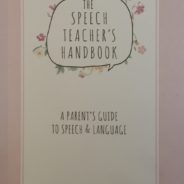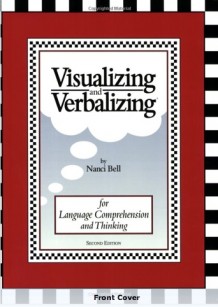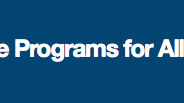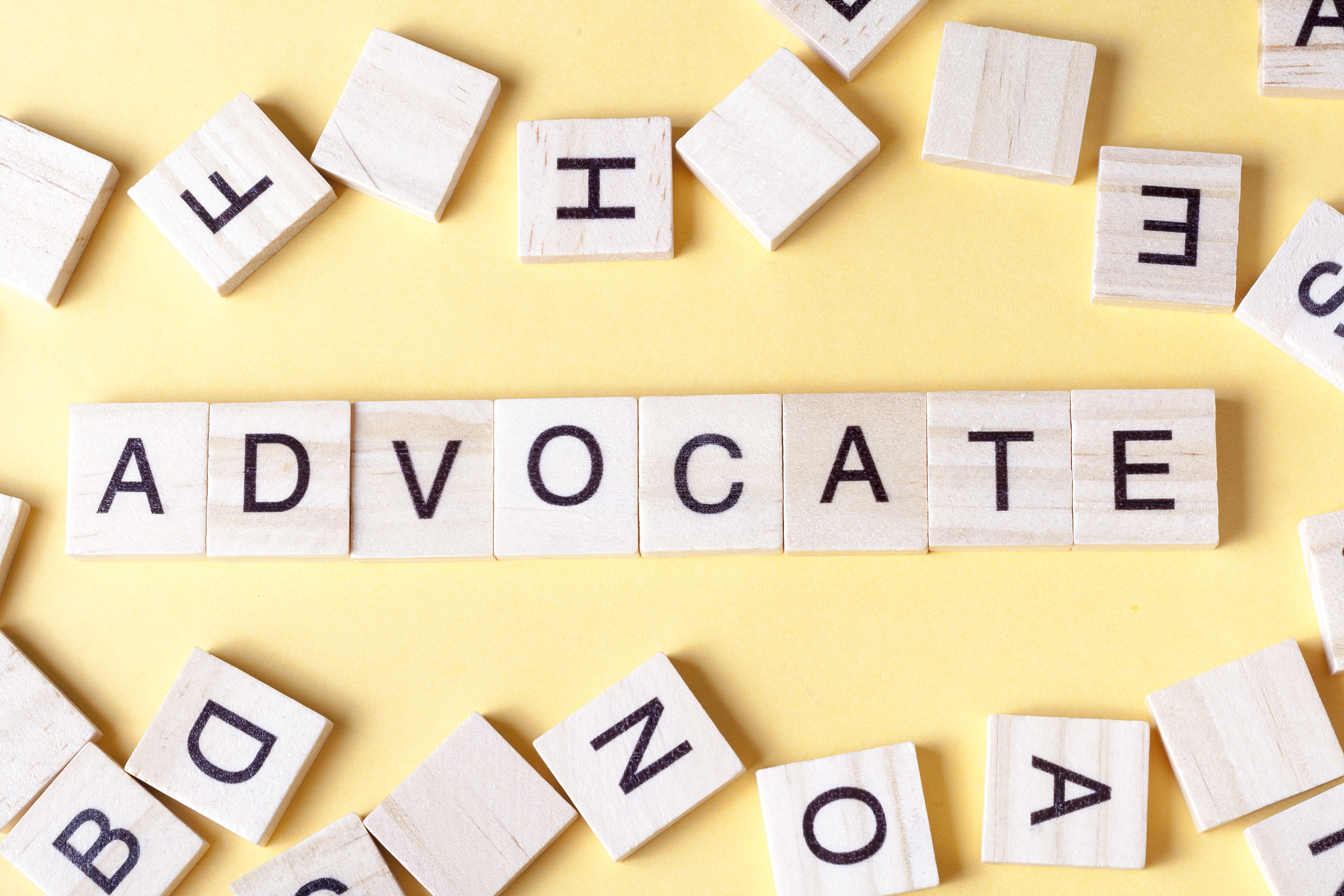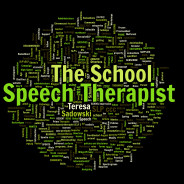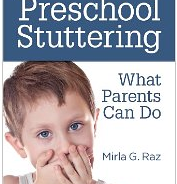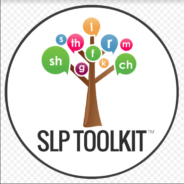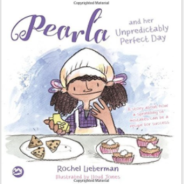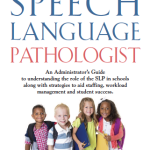SLP Chat
This will be a place where therapists can share ideas, problem solve and express concerns. Lets work together to make our jobs easier!
Teresa
Just renewed my liability insurance…..don’t forget yours!
Over the years I’ve had a habit of forgetting to renew my liability insurance. Now I just put it in my calendar and keep the bill with my personal bills. Trust Risk Management Services made renewel very easy this year letting me renew on line. Since I incorporated this year and started a private practice I did have to make some changes but usually the renewal is straight forward.
While I’ve never needed to use my liability insurance I have carried it most of my professional career. Sorry here is my soap box…If you don’t carry liability you really should. Schools, clinics and hospitals all carry insurance that will cover you but in this very litigious world you can be sued personally. My fee for part time work was right around $125 which makes it very affordable for a piece of minds.
You can go to the TRMS web site for a comparative rate. Just click on the link below
Accommodations are they really that effective?
Every once in awhile I read back through my blog and look at the relevance and passion of my posts. I recently reread the post called “Are accommodations taking the place of specialized instruction”
Looking at some recent IEPs I would think the answer is yes. I know I still write a lot of accommodations. My reasons are because I know I either don’t have the time to follow up on every thing during the limited weekly sessions or there are things I want to address (and do address) that just can’t be measured easily. Now I know most of the accommodations are related to testing but I have to ask are those accommodations being followed every time a test is given. With 20-30 kids in a classroom I seriously doubt it. I actually worked in one school where they though the accommodations I presented were only suppose to be followed in PE and other specialists. I set them straight but the Harvard educated program manager did not believe me. I think the biggest problem with accommodations is that it gives the parent and student the false sense that all will be well with accommodations. I have never understood why we are not front loading kids with specialized services when they are little but that is a topic for another time.
So what are your go to accommodations for you speech and language students? Who follows up on if the accommodations are being used? How do you measure if the accommodation is helpful or not? Do teachers come to you looking for help implimenting accommodations? Does anyone feel the same way I do that accommodations are taking the place of specialized instruction?
The Speech Teacher’s Handbook: Book Review
I recently came across this book on Amazon. It piqued my interest so I bought it. It is called “The Speech Teacher’s Handbook, A Parent’s Guide to Speech and Language” by Molly Dresner, MS SLP-CCC. I found the title to be a little awkward but the information in the book to be pretty good. First of all I know a lot of you out there will take exception to the use of “The Speech Teacher”, you all need to get past that. Face it we have a branding issue, which is certainly a topic for another time. I can understand why Ms. Dresner used the title “Speech Teacher” because in the world of early intervention that is how we are known. In the book she makes it clear that she is a “Speech Language Pathologist.”
The second part of her title provided a little more explanation regarding whom the book was written for but still seemed a little incomplete to me. People who are not Speech Language Pathologists might ask Speech and Language what? Parents might not know immediately that it is written for them.
Getting past the title, this little book contains a lot of good information for parents on how to foster speech and language skills with their little ones. Ms. Dresner’s guidance and explanations are clear and concise. There is a nice little summary at the end of each chapter. Some easy to understand speech and language developmental norms are found at the end of the book.
A seasoned SLP might look at some of Ms. Dresner’s suggestions and say that most of her information is just common sense. However, I’m seeing more and more older students who can’t name body parts/common objects, have poor listening/memory skills and produce short sentences so some parents out there do need this information.
The chapter on “Cocktail Talk” puzzled me a little bit since that seemed to be written for SLP’s. While Ms. Dresner initially mentions that you should make sure parents know they can get an assessment through their school system, she goes on to mention parameters of speech and language development in a variety of areas. (I personally back off on talking about speech and language issues when asked outside the professional realm. I have found that that people who engage me usually don’t follow my advice or take my advice to mean the child is probably ok. When people speak to you outside of the professional realm and without the child there, you have no knowledge of their background or other developmental needs. I’m big on including both in my assessments of students, even my middle to high school students.)
I’m giving thumbs up on this book. I think it would be an excellent resource to give out either to early intervention clients or as a welcome to daycare packet for little ones. Day care teachers could read this book as a refresher and daycare assistants could use this book as continuing education. Ms. Dresner has put together some wonderful ideas for simply interacting with your child through out the day. This book is not just for children with speech and language delays but for typically developing children as well. This book will “Help You Help Your Little One” which I believe was Ms. Dresner’s goal when she sat down to write this book.
Visualizing and Verbalizing goals/objectives
Several years ago I took the Visualizing and Verbalizing course. It must have been a 3 or 4-day course. I didn’t take it directly from Lindamood Bell but from a local agency that was approved by Lindamood-Bell and used Visualizing and Verbalizing in their practice. I was honestly very impressed with V and V. My initial impression was that it tapped into a lot of what I was trying to do with many of my students. Basically it presented me with a better-organized and sequential program that fit my needs at the time. At the completion of the course I wrote a reflection paper, which I feel is still relevant today.
Now ironically, the V and V kit along with LIPS (then known as ADD) kit sat on my inherited shelves for years untouched. I seem to remember seeing them collecting dust in various reading specialists offices too. I’m really sorry I didn’t jump on this bandwagon sooner. I also regret not taking the longer LIPS course when I was younger and becoming an expert in it.
I think most of the people taking the course with me were just as excited and anxious to use V and V in their practice. The big question came up. How do we write goals for this? All the controversy around goal writing was just starting to heat up and we needed something substantial. As a group we talked about wording and I’m still searching for those notes. What I did find was the handout given to us by the instructor after our group discussion. Keep in mind that the instructor worked in a clinical setting and that these were generated long before schools started requiring some tie in to curriculum. Also in schools we are not suppose to write goals around a specific program. While V and V isn’t mentioned the first one refers to structure words and the second one mentions felts.
- Student will verbalize the main idea and details of a given picture, word or sentence using 10/12 of the structured words independently and spontaneously.
- Student will read a paragraph, verbalize his images after each sentence or chunk of sentences (2-3 sentences), and give a picture summary with 80% accuracy (4/5 felts)
- Student will state the main idea of a fiction or non-fiction paragraph 8/10 times.
- Student will read a single or multiparagraph selection, verbalize a retell which includes the main idea of a paragraph and his images after each paragraph and dictate a summary of the selections 8/10 times
After rereading these, it’s clear that these are more less an objective for each stage of the program.
Several years later, I still like V and V and use pieces of it. Visualizing as a skill is being taught more frequently in classrooms than it was even 10 years ago. Schools now have reading specialists that hopefully incorporate some visualizing skill development. I tend to use the program to help expand language, increase vocabulary, help to recognize details/background information and improve semantic/pragmatic understanding. I have specific photos on my IPad that I collected over the years and often use the structured words in conjunction. I sometimes take it down to an even lower level using just one or two of the structure words as appropriate.
However, the real question for me is why don’t these very expensive programs come with goal suggestions that can be used in schools? Why don’t we leave conferences with specific goal language in hand? So often we leave conferences with a lot of background information (sometimes a lot of review) and very little in terms of specifics around implementation. I feel the same way about formal tests; there is so little discussion on test interpretation and what to do about it. I get that we are suppose to use our clinical judgment but a little guidance and a few more examples would be nice. I guess that’s a discussion for another day.
Hey if you haven’t tried V and V it’s worth taking the course. As an SLP I’ve never had a chance to use the full kit. However, I would love to be involved with a school or clinic that uses the program on a regular basis.
Trust Risk Management Services for SLP Liability Insurance
I just want to say thank you to Trust Risk Management Services for your continued support of my blog The School Speech Therapist the past 3 years. Trust Risk Management Services provides liability insurance for SLPs with comprehensive coverage and reasonable rates. I hope if you are a practicing SLP you already carry some type of liability insurance. However, if you don’t have insurance please take a look at the policies offered by TRMS. If you have insurance, next time your policy is up for renewal I hope you will take the time to compare your policy to what TRMS offers.
My own personal feeling is that personal professional liability insurance is a must. Protection offered by schools, hospitals and agencies is usually there to protect their interests not necessarily yours. https://theschoolspeechtherapist.com/wp-admin/post.php?post=1394&action=edit

I’m back and want your input on SLPs in schools
Well it has been awhile since I seriously worked on my blog. In December I left my school position to start a private practice. In July I made it official forming my own LLC called TBS Speech Therapy. I did a little contracting work earlier this year and have firmed up my first consulting gig for the fall. My school year ended without the usual drama and the amount of time I spent on paperwork was significantly less and compensated. Right now work life is good.
If you follow my blog you know I’ve done a little bit of work on advocacy for SLPs in schools. Writing my book, The School Speech Therapist: An administrators guide to understanding the role of the SLP in schools along with strategies to aid staffing, workload management and student success, presenting at ASHA 2016 and writing articles on my blog, has drawn only a little bit of attention but a lot of support from SLPs finding themselves in similar situations. Frankly, I had to give it a rest for a while when I realized that despite my best efforts I was not able to advocate for myself and get results. I was feeling very much like I was hitting my head against a brick wall while burning out at the same time.
I reached out to ASHA years ago on the topic of advocacy in schools and didn’t get much of a response. At the time all I saw were articles on caseload management. Honestly, I was a pro at caseload management. I mentioned my concerns to SIG 16 at ASHA 2017 and even that went nowhere. However, ASHA 2016 was the turning point for me. The motivational speaker who presented at the opening get together inspired me to make a change.
Now after a nice long hiatus and a fun/relaxing summer, I’m feeling productive again. I want to write and article on why SLPs leave school based positions (and also maybe why they don’t leave). I would love any and all input. I’m pretty sure I know what I’m going to hear but I want to see if there is a pattern.
You can tell me your thoughts here, PM or respond on my facebook page, The School Speech Therapist or send an email to theschoolspeechtherapist@gmail.com All is confidential. Thanks Teresa
SLPs, Contribute to your school newsletter
In my state, teachers and all professional staff have to generate personal SMART goals. With all the work SLPs do, the last thing I wanted to do was have to keep complicated data on something I was doing. At that point I decided to do something very easy for me that would benefit all students not just those with language issues. My SMART goal was to write monthly articles focusing on language development.
Initially, I found it wasn’t that easy to find universal themes that could be beneficial to all. However, knowing all we know about language and learning once I had a topic writing for parents was easy. I created articles about once or twice a month for that school year. The idea was well received by my principal. Basically it was free content for the school newsletter. Best of all if I published one article a month (sometimes weekly) I achieved my goal without extensive data collection.
I’ve slowly made these articles available to other SLPs on Teachers Pay Teachers. Here is my current list of articles available on TPT. These articles are written in a word document so they can be edited to fit the needs of you specific setting.
The School Newsletter: Practice Those Memory Skills-free
The School Newsletter: 10 tips to building a strong vocabulary (5 article series)
The School Newsletter: Don’t Drop Picture Books Too Soon
The School Newsletter: Don’t Forget The Details
The School Newsletter: Strengthen Language Skills Through Conversation
My section of the school newsletter was titled “Notes from the School Speech Therapist.” If I were to introduce this at another school I would probably change that title.
The articles are available in my TPT store. This was such an easy way to achieve my Smart goal. I received some very nice complements from my staff and administrators. It also made my presence in the building more obvious, helped to encourage language and learning beyond the school day and hopefully made parents more aware of what they could do to support their child’s development. I believe the articles were also a universal support that helped with general language development. Better Speech and hearing should be highlighted all year around not just in May.
Let me know what you think. I do have other articles to post so please check back often. If you have ideas for articles I would love to hear them.
Teresa
Stopping the Stuttering Trajectory in the Preschool Years
The School Speech Therapist would like to welcome guest blogger Mirla G. Raz. I first became acquainted with Ms. Raz when I was asked to review her most recent publication Preschool Stuttering: What Parents Can Do. I was duly impressed with the book (you can read my review here). As it turned out I was already very familiar with Ms. Raz’s work since I had been using her books from her Help Me Talk Right series for years. The Help Me Talk Right Books continue to be a staple in my therapy room.
Ms. Raz has shared an excerpt taken from her newly developed course Stopping the Stuttering Trajectory in the Preschool Years available through Northern Speech Services. The course is designed to teach SLPs how they can help parents navigate the emotional and often confusing landscape of stuttering. Given that Ms. Raz’s book was so helpful to me, I believe her course will significantly add to your body of knowledge. Teresa
From Stopping the Stuttering Trajectory in the Preschool Years By Mirla G. Raz
Stuttering during the preschool years can be an easy problem to solve, one that may stop the child’s stutter before therapy is ever needed. We can do this by helping parents understand the disorder and advising them how best to communicate with their preschooler.
When parents hear their child stutter, their first inclination is often to intervene without professional input. They believe that what they do will help their child stop stuttering. They may not realize that their actions can be counterproductive. We can help parents by asking them to avoid specific interactions. We can help them by offering replacement interactions.
Below I have listed the interactions to be avoided:
- Speaking for the child.
- Finishing words or sentences for the child.
- Interrupting the child when he is speaking.
- Facial or body language that shows the child the parent is anxious or upset about the child’s speech.
- Asking the child to perform or recite in front of others.
- Talking about the child’s speech when others are present.
- Getting upset or distressed when the child stutters.
- Calling the child a “stutterer.”
- Limiting the amount of time the child has to speak or indicating that the parent is in a rush and does not have the time to listen.
- Bombarding the child with questions.
- Poking fun of the child’s speech or teasing him about it.
Parent can replace unhelpful interactions with the following:
- The parent should get down to eye level with the child and make eye contact.
- The parent should listen to what the child is saying.
- The parent should not interrupt the child or try to help him as he stutters.
- When the child is done talking the parent should comment on what the child has said, not how he has said it.
Mirla G. Raz has been working as an SLP for over 40 years. She is the author of the popular Help Me Talk Right books. Her most recent publication, Preschool Stuttering: What Parents Can Do is a comprehensive book designed to help parents understand stuttering during the preschool years. The book explains what happens when a child stutters, stuttering facts, the role of emotions and temperament in stuttering, the emotions and roles of the parents, what can cause the stutter to be better or worse, the impact of the child’s environment, when and where to seek professional help and more. The books are available through her website www.helpmetalkright.com and Amazon (see links below).
Progress Monitoring Made Easy with SLP Toolkit
The School Speech Therapist would like to welcome guest bloggers Lisa Kathman, M.S. CCC-SLP & Sarah Bevier, M.S. CCC-SLP. I met Lisa and Sarah at the 2016 ASHA convention. Sarah gave me a quick demonstration of their product, SLP Toolkit and every aspect of it made sense. My initial impression was that it really could help school based SLPs. The following day I attended their formal presentation and continued to be impressed. For school SLPs the biggest drag is the copious amount of paperwork and vast amount of data we are suppose to collect. SLP Tool Kit has programs set up to take care of everything from goal writing to progress reports. They’ve set up ways to keep/measure data and have it organized for progress report writing. I’ve seen many a program over the years that is suppose to help with one thing or another but none with the universal potential of SLP Toolkit. I want every school based SLP to know about SLP Toolkit. Please take the time to check out this web based product. If you like it, don’t wait for your school to approve it. Sign up for a free trial or just get it for yourself. It might just make your life significantly easier. Teresa
Why does every school-based SLP dread the end of the grading period? It may have something to do with the 60 or so progress reports that go along with it (and the fact that you usually have to complete them over your vacation).
If you look at your current caseload, chances are that most of your goals are written in a format that uses SLP data as the criteria for measurement. So progress reports involve you pulling out your speech files, pouring through the session notes, doing some math, and hoping you have what you need to fill in the progress section on your report…because if not, you will be doing some last minute scrambling to collect data points or even worse, making “smart guesses” on progress.
The issue is not whether we collect data. We are speech-language pathologists! We not only are trained to take data and are good at it, but it is in our nature to love data. The problem is the the fact that the data we collect doesn’t necessarily align to how a goal is written. Let me explain further. The whole point of taking data in speech therapy is to make ongoing treatment decisions (e.g. What cues/intervention strategies worked best? What isn’t working? Is change occurring? What direction do I want to go in next time?) This is usually different data than what we need for a progress report, which is the performance on a skill in percentage format that you want a student to achieve within a year.
This is especially true for new IEPs when you may be working on underpinnings for the skill or related skills, but not the skill exactly as it is written in the IEP. Even when you think you are taking black and white data, for example for a skill like naming synonyms, there can be a wide variation in scores you record in your notes if there is no consideration in selection of stimulus items during therapy. For example, if one week you’re asking the student to name a synonym for the word “big” and the next week you’re asking for a synonym for the word “artificial”, scores look very different. No wonder panic and meltdowns happen at the time of writing progress reports.
This is where criterion referenced tests (CRTs) and rubrics can come to the rescue! CRTs measure a student’s performance against a predetermined criteria. Teachers frequently use CRTs to evaluate whether students have learned a skill or have met the expected academic standards. This form of measurement is also an excellent way for SLPs to collect baseline data on communication skills and then retest the student’s performance using the same criteria each quarter to monitor progress. The consistency of using the same CRT to retest improves accuracy of the data. The same set of stimulus items is used each grading period to determine progress on the skill.
As with any other assessment, it is important not to teach the items on the criterion referenced test. In treatment you are working on the strategies a student needs to acquire that skill in various contexts and then use the CRT at the end of the grading period to determine if those skills can be applied to the test.
Another effective way to measure progress on IEP goals is to use a rubric. Rubrics list a set criteria for mastery that include both quantitative and qualitative data in a way that makes sense to teachers and parents. They can include objective performance data on the skill, level of cueing needed, setting skill is used among other things, making it a more authentic measurement of the skill, with points assigned for each level of performance. Rubrics are particularly helpful for breaking down and assessing the complex nature of social skills, which can be complex and subjective. However, they are not limited to this communication area.
When using a rubric, it is important to attach the rubric to the student’s IEP so it is clear how the goal is being measured. Otherwise parents/teachers/unfamiliar readers may interpret a rubric score of 14/15 as a ratio rather than a total number of points to achieve.
If you would like to see some examples of CRTs and rubrics, SLP Toolkit has created a large bank with hundreds of speech/language CRTs and rubrics for a variety of communication skills. Sign up for a free trial at www.slptoolkit.com to access all content within the app for up to five students, including the progress monitoring tools.
For more information on criterion referenced tests and rubrics, check out our video tutorials on our Vimeo channel.
A little about Lisa and Sarah: Both hold master’s degrees in communication disorders from Arizona State University. Lisa has been an SLP for 20 years and is the lead SLP for Mesa Public Schools. She has presented on multiple topics in a variety of communication areas to general/special education teachers, directors, and students. Sarah has been in the field of speech pathology as an SLPA, speech technician and SLP for 10 years. Sarah has experience providing training to SLPs, school staff and university students on therapy topics and assessment.
Adopting a growth mindset
Today The School Speech Therapist wants to introduce guest blogger Rochel Lieberman MA CCC-SLP who has recently written a children’s book called Pearla and her Unpredictably Perfect Day: A story about how a sprinkling of mistakes can be a recipe for success. Perla is written for children aged 4-12, particularly those who experience anxiety or developmental issues. It demonstrates that you can’t succeed unless you try and that it’s ok to make mistakes. Pearla’s strategies for solving her problems will help children to overcome their own hurdles. Read more about Pearla and the motivation behind this book below. Please consider sharing this book with the children in your life. Teresa
There is a charity bake sale at school. Sara, juggling two jobs while raising her three children does not have the time nor energy to bake a cake for the sale. She thought about putting in the effort, but her previous baking attempts have not been successful. On her way home from work, she picks up a tray of large round cookies at the supermarket. She meets Lisa, her close friend, and they begin with the “mom talk”. Lisa relays that she does not enjoy baking, will probably stay up late to bake a cake anyway, and wonders aloud why she is struggling with herself for this endeavor.
I believe that there are multiple sources for the intense pressure for perfection that is found in both children and adults. Thankfully, there are a great many ways to combat that pressure. While genetics, family of origin, and innate personality can lay the foundation for pressure, there is also a mindset that plays a significant role in how one views perfection.
Growth vs. Fixed Mindset:
Dr. Carol Dweck, a world leading researcher on motivation and success from Stanford University, studied why some people succeed and others do not. What she uncovered was that there are some people who believe in a fixed mindset, that basic traits and talents which you were born or endowed with, like intelligence, are fixed. Others, she found, believe in a growth mindset, where success is attributed to hard work and effort. Individuals with a fixed mindset usually only choose items and activities that they know they’re good at. Individuals with a growth mindset welcome mistakes and accept that it they are part of the path to success, thus increasing their successful opportunities.
In Pearla and Her Unpredictably Perfect Day, Pearla embarks on a journey that begins with a fixed belief that mistakes are “just not okay in Pearla’s perfect world”. In this story we meet other characters who share similar limiting beliefs; we meet Mrs. PeggyOpal and daughter Darla who come from the other side of the river wearing matching sundresses. They travel with a tester, a person to taste each confection before they eat it. Darla and her mother, are horrified to see the mistake cupcakes, and say, “I only eat tall cupcakes with perfect wiggly white cream”. As is typical of those with a fixed mindset, the PeggyOpals leave the store without any cupcakes to take home. While they are stuck in their fixed mindset of success, even proudly displaying their peg-board status on their license plate (“Pego”), Pearla begins to question her beliefs and thinks of a promising plan to deal with her mistake. In doing this, she develops a growth mindset. At the end of the entertaining tale, she learns an important lesson that she will never forget: “Sometimes things don’t go perfectly. By staying calm, we might see that imperfect changes can turn into perfectly perfect plans!”
While the reader can feel empathy for the PeggyOpals, it is important to understand that anyone can adopt a growth mindset. At the end of the story, the PeggyOpals reconsider if they should try the imperfect confections! They can be seen standing outside the bakery with their taster. Although we do not know if they will indeed enter the bakery, this a big step in developing their growth mindset. Individuals with a growth mindset understand that challenges will arise and problem solving will be required. Take one second and ask yourself ask “in what area of my life do I have a fixed mindset?”
To read more about Rochel and to purchase Pearla and Her Unpredictably Perfect Day visit www.ariberspeech.com


